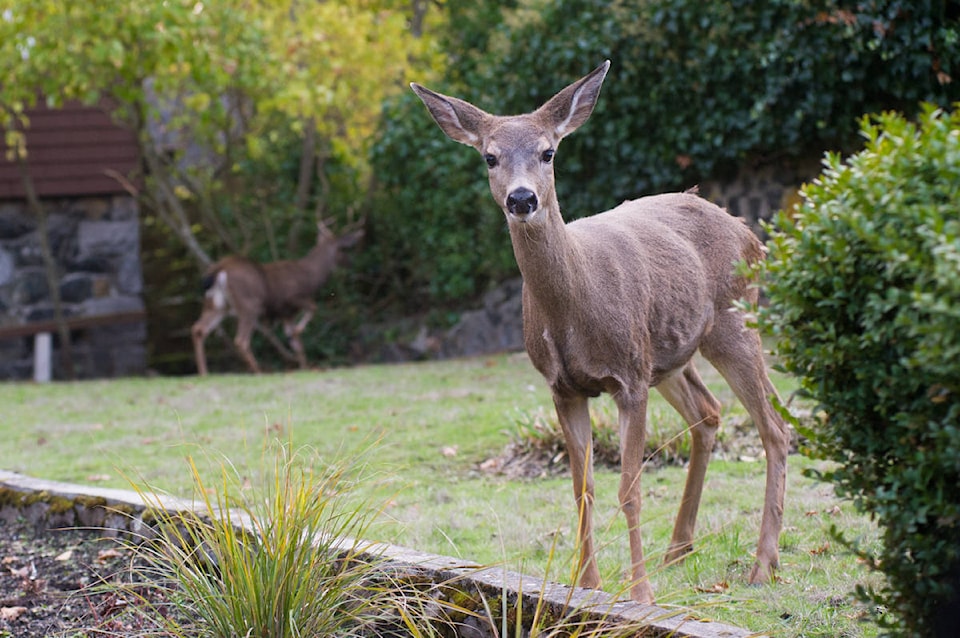With this season’s fawns growing bigger and a little bolder, they’re starting to explore more independently.
At the same time, they still lack some of that “street sense” that mom and last season’s more experienced yearlings have, meaning drivers and cyclists must continue being vigilant as they travel local streets and trails.
Slow down in areas deer are known to frequent, and keep your eyes on alert, scanning the sides of the road ahead, especially at dawn and dusk when deer are more active.
If you see one deer, slow down and expect more to follow as they rarely travel alone, and remember, headlights will confuse deer and may cause them to freeze or act unpredictably, notes Kristy Kilpatrick, from the Urban Wildlife Stewardship Society, which is working with the Township of Esquimalt on deer management.
Awareness of our urban wildlife, and how we can coexist, is an essential part of responsible stewardship. As UWSS biologist Anne Drummond noted in a recent blog, stewardship refers to the responsible use and protection of natural environments and ideally includes not only what is good for our use of the land, but also what’s good for the habitat and wildlife that uses it.
The result brings benefits to both.
“There is little doubt that a more caring relationship between people and nature would bring great benefits to both parties. While as individuals we may not be able to bring about change on a large scale, we can, through our actions, all foster a more caring relationship with the urban wildlife around us.”
Beyond keeping cats indoors and teaching dogs and children not to harass wildlife, key steps we can take involve preserving or creating habitat wherever we can, making it possible for wild creatures to coexist with us. For example:
- Create brush piles in your garden and encourage wild areas for shelter
- Top garden beds with leaves as winter mulch; insects and invertebrates the leaves attract provide protein-rich food for spring birds
- Plant bird- and insect-friendly plants
- Don’t remove trees unless they’re a safety hazard; every mature tree, particularly evergreens, are home to many birds, invertebrates and small mammals
- Let lawns become wild, plant wildflower lawns or replace it with trees, shrubs and flowering plants
- Only prune hedges, trees and shrubs well before or well after birds have nested
- Avoid pesticides, herbicides or poisons
- Maintain hummingbird and seed feeders during winter
- Provide clean water for birds and animals
Stewardship isn’t only about the birds and the bees either. When it comes to urban deer, it is possible to effectively share our space. Steps such as fencing backyards or areas where deer are unwanted, and planting other spaces with native species and others that are less palatable to deer – options which also tend to be drought-tolerant – can help create spaces well-suited to both humans and wildlife.
And fencing needn’t cover the entire perimeter of your property, and needn’t be expensive – many simple solutions can be quite effective, Kilpatrick notes.
For more information, visit uwss.ca and to learn more about deer management in Esquimalt, including where to pick up your free deer awareness sign, visit esquimalt.ca
